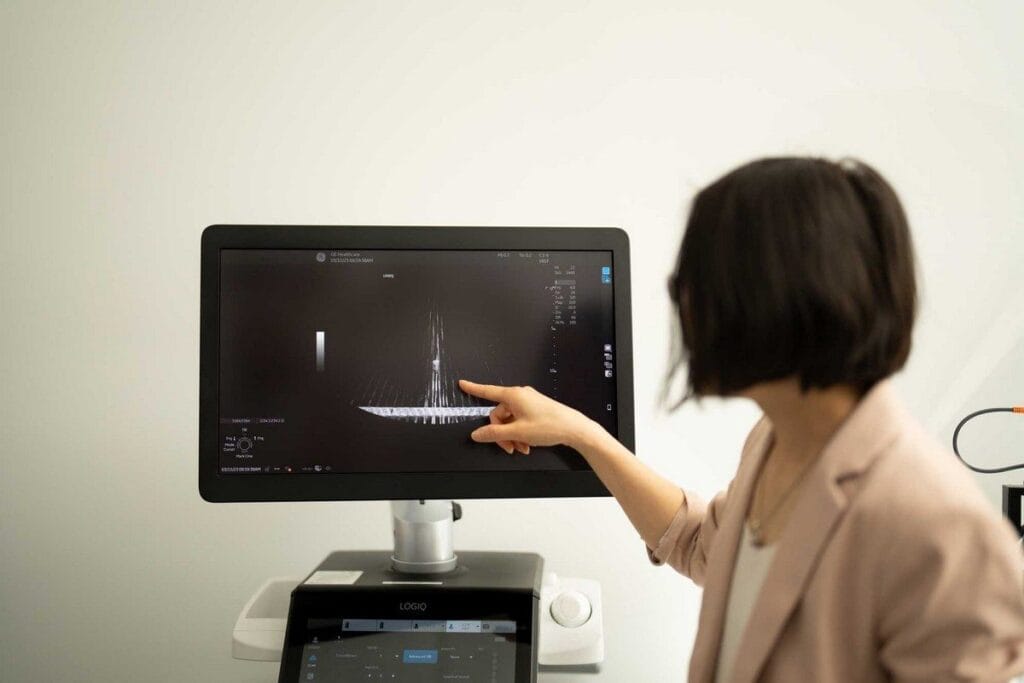If you think cancer treatment is always a long, exhausting process, think again! SBRT technology, or Stereotactic Body Radiation Therapy, is changing the game by delivering high doses of radiation with pinpoint accuracy. This breakthrough approach treats tumors anywhere in the body quickly and effectively while protecting healthy tissue. Thanks to cutting-edge imaging and focused radiation beams, patients experience shorter treatment times and fewer side effects. Ready to learn how this innovative tech is reshaping cancer care? Let’s dive in!
Introduction to SBRT Technology in Cancer Treatment
Stereotactic Body Radiation Therapy (SBRT) represents a breakthrough in modern cancer treatment. This advanced form of radiotherapy delivers a high dose of radiation precisely to tumors anywhere in the body, minimizing damage to healthy tissue. SBRT uses highly focused radiation beams that target the exact size and shape of the tumor, making it a valuable option for patients at specialized cancer centers. Unlike conventional radiation therapy, SBRT typically requires fewer treatment sessions, which means a shorter course of treatment with an improved quality of life for cancer patients.
What Is Stereotactic Body Radiation Therapy (SBRT)?
Stereotactic body radiation therapy, sometimes called stereotactic ablative radiotherapy, is a type of stereotactic radiation treatment that delivers very precise, high dose radiation beams from different angles. This method relies on advanced imaging techniques like CT scans and X-rays to guide the radiation oncologist in targeting the tumor accurately. The use of a linear accelerator (linac) allows the sbrt machine to focus multiple beams of radiation on the tumor with minimal exposure to surrounding tissues, making it a powerful treatment option in radiation oncology.
Did you know that SBRT can deliver radiation in just five sessions or fewer, compared to weeks of conventional therapy?
How SBRT Works in the Field of Radiation
In the field of radiation, SBRT uses a specialized treatment machine that delivers external beam radiation precisely. The radiation dose is carefully calculated and delivered using advanced image-guided radiation therapy to focus on the tumor’s exact location. Because SBRT delivers a high dose of radiation in fewer sessions, it is efficient and effective. The ability to target the tumor from various angles allows the radiation oncologist to maximize tumor damage while sparing healthy tissue. This method differs from fractionated radiation because it uses fewer, higher doses rather than spreading lower doses over many sessions.
Benefits of Using SBRT for Cancer Patients
The benefits of SBRT include effective treatment of tumors with fewer side effects than traditional therapies. Its precision means less damage to healthy organs near the tumor, reducing complications. SBRT treatments usually complete in just five sessions or fewer, shortening treatment time dramatically. This results in improved patient comfort and convenience. Additionally, because SBRT can be delivered anywhere in the body, it may be an option for patients with tumors in difficult locations or those who cannot undergo surgery.
SBRT for Prostate Cancer

SBRT has proven particularly effective for prostate cancer treatment, offering a non-invasive and targeted approach to manage this common type of cancer. Because prostate cancer tumors are localized, SBRT can deliver a high dose of radiation precisely, preserving surrounding organs like the bladder and rectum. Many cancer centers recommend SBRT as a first-line treatment for suitable patients due to its excellent tumor control and shorter overall treatment time compared to other methods.
Understanding Prostate Cancer and Its Challenges
Prostate cancer is among the most frequently diagnosed cancers in men, presenting challenges due to its proximity to sensitive organs. The slow growth of prostate tumors often requires careful management to balance effective treatment and quality of life. The risk of side effects like urinary or bowel issues is a significant consideration in prostate cancer treatment. Therefore, targeted approaches like SBRT offer a promising solution by focusing the radiation dose precisely on the prostate.
SBRT for Prostate Cancer: Precision and Effectiveness
SBRT for prostate cancer utilizes multiple focused beams to deliver a high dose in a short period, often over five sessions within one to two weeks. Using advanced imaging such as CT scans and MRI, the radiation oncologist ensures accurate treatment delivery. This precision reduces exposure to nearby organs, thereby limiting side effects. Clinical studies show SBRT achieves comparable tumor control to surgery or conventional radiation therapy but with fewer complications and quicker recovery.
Comparing SBRT with Other Prostate Cancer Treatments
Compared to surgery and traditional radiation, SBRT to treat prostate cancer offers shorter treatment time and is less invasive. While surgery involves risks of complications and longer recovery, SBRT minimizes disruption to daily life. Unlike fractionated radiation, which requires many visits over weeks, SBRT completes treatment efficiently. Additionally, SBRT may be preferable for patients ineligible for surgery due to age or health conditions, expanding treatment options.
Read also DNA and Forensics Career
Stereotactic Radiosurgery and Radiotherapy Advances
The development of stereotactic radiosurgery (SRS) and SBRT represents significant advances in targeted cancer therapies. While SRS typically treats brain tumors, SBRT extends the precision concept to the body, enabling radiosurgery-level accuracy for extracranial tumors. Both techniques use focused beams of radiation to deliver curative doses while preserving healthy tissue.
Difference Between Stereotactic Radiosurgery and SBRT
Though related, stereotactic radiosurgery primarily targets brain tumors with a single high-dose session, whereas SBRT treats tumors in the body through a small number of high-dose sessions. SBRT is sometimes called stereotactic ablative body radiation due to its ablative intent. The differences lie in treatment location and fractionation but share the principle of precision and dose escalation.
Did you know that SBRT is effective for treating not only prostate cancer but also lung and liver tumors?
Role of Radiotherapy in Modern Cancer Treatment
Radiotherapy remains a cornerstone in modern oncology, used alone or combined with surgery and chemotherapy. The introduction of SBRT and other advanced forms of radiation therapy enhances treatment effectiveness and patient outcomes. In the department of radiation oncology, specialists design personalized treatment plans based on tumor type, location, and patient health.
Innovations in Radiosurgery for Complex Cancer Cases
Recent innovations in radiosurgery improve targeting for complex tumors near critical structures like the spine or lungs. Technologies such as image-guided radiation therapy and motion tracking enable safe delivery of high dose radiation with minimized side effects. These advances open new possibilities for treating previously inoperable or metastatic tumors.
Clinical Applications of SBRT in Cancer Care
SBRT’s versatility allows it to treat various tumors in the body, including those that are localized or have spread to limited sites. Its ability to concentrate radiation reduces exposure to healthy tissue and increases treatment efficacy.
Use SBRT for Localized Tumors
For localized tumors, SBRT provides a non-invasive option that targets the tumor with high precision, often achieving tumor control rates similar to surgery. It is particularly effective for lung cancer, liver tumors, and prostate cancer, where controlling the tumor without extensive damage is crucial.
Read about Silhouette Instalift or Surgical Facelift
Expanding the Field of Radiation with SBRT
The field of radiation treated by SBRT is expanding due to technological advances. New techniques allow treating tumors in various body parts, including the spine, pancreas, and lymph nodes. This growth increases SBRT’s role in managing both primary tumors and limited metastatic cancer.
SBRT Success Rates Across Different Cancer Types
Studies reveal SBRT success rates are high across multiple types of cancer, especially prostate, lung, and liver cancers. Its precision and dose delivery contribute to improved tumor control with reduced side effects, benefiting many cancer patients worldwide.
Patient Experience and Safety in SBRT

SBRT offers a patient-friendly approach with fewer hospital visits and faster recovery, but preparation and safety protocols remain essential to optimize outcomes.
Preparing for Stereotactic Body Radiation Therapy
Patients undergo comprehensive evaluation, including advanced imaging like CT scans and MRI, to map the tumor accurately. The care team develops a personalized plan, ensuring the treatment targets the tumor precisely. Proper preparation helps reduce risks during radiation treatment.
Side Effects and Recovery in SBRT Patients
Side effects depend on tumor location and radiation dose but are generally fewer and less severe than conventional therapies. Common effects include mild fatigue, skin irritation, or temporary inflammation near the tumor. Most patients recover quickly and resume normal activities shortly after completing treatment.
Safety Protocols in Advanced Radiotherapy
Safety in SBRT relies on strict protocols in planning and delivery. Techniques such as motion management, imaging verification, and dose monitoring help minimize risks. The department of radiation oncology closely monitors patients throughout treatment to ensure safety and effectiveness.
Future of SBRT in Oncology
Ongoing research and technological improvements continue to broaden SBRT’s application and enhance its effectiveness in cancer care.
Did you know that SBRT uses advanced imaging like CT scans and X-rays to target tumors precisely, minimizing side effects?
Research Trends in SBRT for Prostate Cancer
Current research explores optimizing SBRT for prostate cancer, including combining it with hormonal therapies and evaluating long-term outcomes. Studies aim to refine dosing and minimize side effects while improving tumor control.
Combining SBRT with Other Cancer Treatments
Combining SBRT with systemic therapies such as chemotherapy, immunotherapy, or targeted drugs is an area of active investigation. This multimodal approach seeks to improve outcomes for patients with both localized and metastatic cancers.
The Growing Role of SBRT in Cancer Management
As technology advances, SBRT is expected to become an integral part of personalized cancer treatment plans. Its ability to deliver high dose radiation precisely and efficiently supports its growing use across many types of cancer and patient populations.
Frequently Asked Questions about SBRT technology
What’s new in SBRT and radiotherapy advancements?
Recent advancements in SBRT and radiotherapy include improved image-guided radiation therapy, motion tracking, and higher precision using linear accelerators (linac). These updates allow safer delivery of a high dose of radiation to complex tumors anywhere in the body, including lymph nodes and metastatic cancer, while better sparing healthy tissue and reducing the risk of side effects.
What is the disadvantage of SBRT?
While SBRT offers targeted treatment with fewer sessions, its main disadvantage is the potential for side effects near the tumor due to the high dose radiation. Also, SBRT may not be suitable for large tumors or cancers that have spread extensively. Careful patient selection by the radiation oncologist is essential to minimize risks.
What is the SBRT technique?
The SBRT technique uses multiple precisely aimed radiation beams delivered by a linear accelerator over a few treatment sessions. It relies on advanced imaging like CT scans and X-rays to map the tumor’s size and shape, ensuring that the radiation dose targets the tumor while sparing nearby organs. This technique is sometimes called stereotactic ablative radiotherapy (SABR).
SBRT technology stands at the forefront of modern cancer treatment, offering hope with precision and speed. Its ability to target tumors with powerful radiation doses while sparing healthy tissue makes it an exciting option for many patients. Whether facing prostate cancer or other localized tumors, SBRT provides a faster, less invasive path to recovery. Curious if SBRT could be the right treatment for you or a loved one? Don’t hesitate to talk to your oncology care team, They’re ready to guide you through all the latest options. Stay informed, stay empowered, and remember, advances in cancer treatment are happening every day!
Read about Laser Teeth Whitening